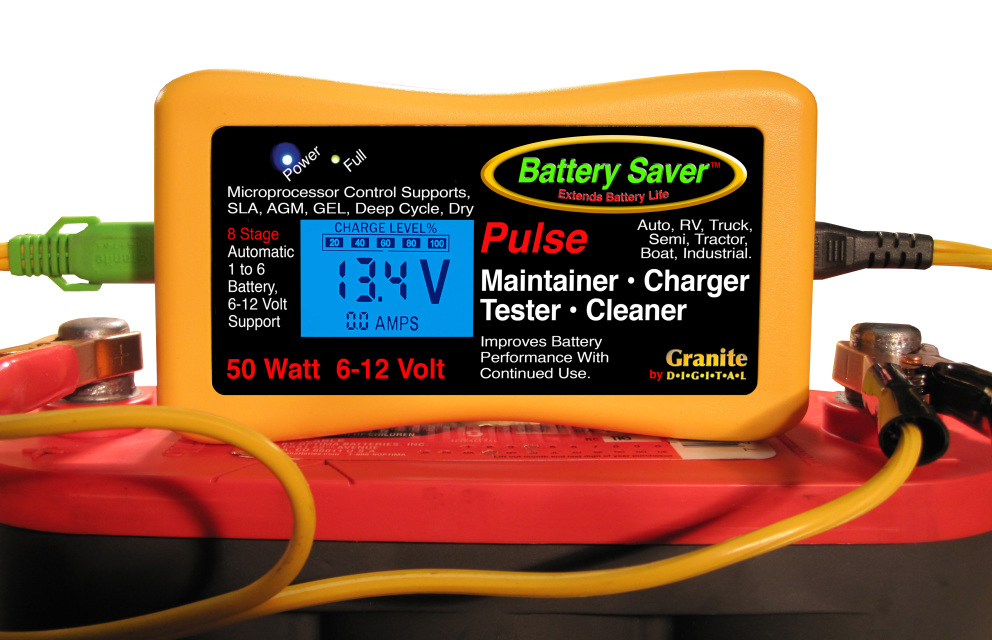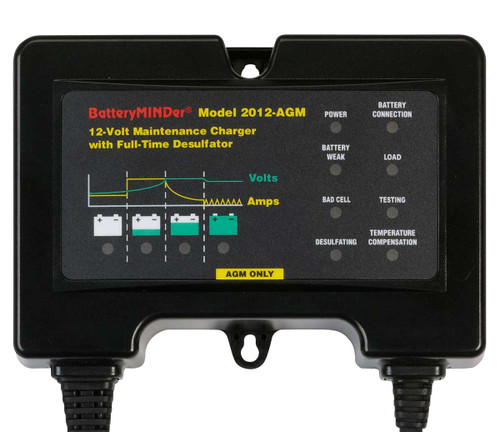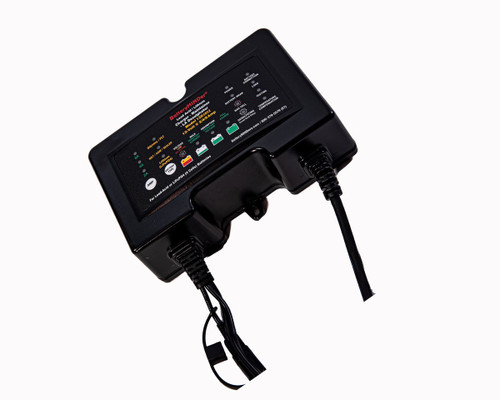So here is a graph from my bluetooth battery monitor. The flat line is from a Griot's Garage Battery Manager IV (no longer sold) that gives out a float charge on an AGM battery of around 13.7 volts. I disconnected it, and attached a brand new to me, Granite Digital Battery Saver 50 watt maintainer (Gen3), and notice their pulse cycle moves between 13 volts and about 13.3 volts two or three times per hour.
I am not an EE, so what do the experts think of this?
My first thought with a variation like that is, is some module turning on in the vehicle?
It seems strange that it would let it drop like that and then charge right back. I’d expect it to wait until a lower voltage, 12.8v or 12.6v was breached. This could be a test though. I’ve seen some chargers that let the battery rest to see how fast it drops. This is to help understand parasitic loads and the potential of an internal short. What does the manual say about late stages of the charging profile?
I own several brands of battery maintainers. One I like is the Granite Digital "Battery Saver". Has anyone tested the charging cycle on these?
This 50 Watt device Charges, Maintains, PULSE Cleans & Tests a Vehicle Battery. Works with All Standard Lead Acid battery types and sizes.
www.batterysaver.com
That isn’t a charger. Those pulse desulfators are more like a turn signal flasher or a camera flash. They are designed to charge from the battery (like a parasite), and then push a higher voltage pulse momentarily into the battery. The theory is that this helps to desulfate. But at the same time the circuit is ineffficient so it’s consuming energy. Frankly I’d avoid these. If a charger like the BatteryMinder has a persistent desulfation mode, then I wouldn’t be worried.
So after a little testing, I am unimpressed with the maintenance float charge profile for AGM batteries on this TypeS branded battery maintainer from Costco.com. It is around 13.25vt to 13.35vt. I usually see around 13.7 to 13.8 with my Granite Digital or Griots Garage battery tender which seems to be the standard profile for AGM.
I'm going to return this one.
There is no one size fits all value, even for all flooded or all AGM batteries. The alloys, pastes, plate designs, amount of excess electrolyte, etc. all come into ply here.
Float is a tricky thing. More tricky than charge. Charge has some nuanced scenarios, like balancing, where it may go up higher, but float is the long term scenario where the designer is trying to balance electrolyte loss, corrosion on plates, gassing, etc.
For float, they key is to be fully charged, but to not do other harm. The reversible potentials are V+ = +1.685 V and V− = −0.356 V, giving an open circuit e.m.f. V = 2.041 V. While there are some other polarization losses that need to be overcome, this really means that if the open circuit voltage is kept above this, 12.24, at room temperature, sulfation should be kept at a minimum. Granted there are other considerations on the voltage threshold for sulfation to begin, including the condition and loss of electrolyte.
Remember that float is supposed to keep the battery at 100% soc. It’s supposed to replace any losses from use or self discharge. And self discharge should be relatively low. And the key is this:
Vt=Voc +/- I*R
So the float voltage should just overcome whatever the IR loss is internal to the battery. Thus the minimum float voltage should be just a tiny bit over the OC (and be temperature compensated) to prevent any reactions from occurring. The other issue is that there are polarization losses just to get electrons to be mobile. Thus the float voltage needs to be a tad higher to ensure that electrons can flow.
But I look at it like this:
A car isn’t a telecon tower UPS, a submarine battery, or anything else that is mission critical. You need to crank and occasionally run a vent fan or something. So you really don’t care that the battery is 100% exactly fully charged. You care that sulfation isn’t thermodynamically favorable from an electrochemistry perspective, and that you’re not contributing to minor gassing and loss of electrolyte (which is damaging in AGM batteries especially), then it’s probably ok. It keeps the electrochemistry in a range where it isn’t feasible to operate, it keeps the battery at roughly 100% SOC, and is safer than going higher. No it won’t give the theoretical max output from the battery, but it should keep it as close to full as possible, and should fend off creation of hard sulfate within reason.












